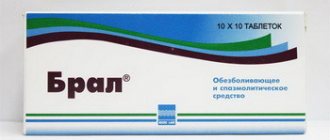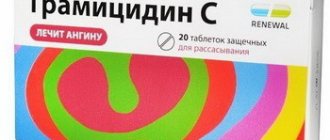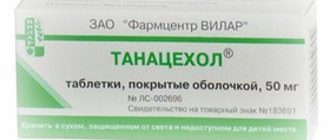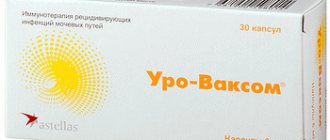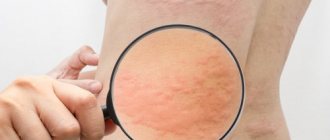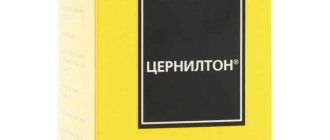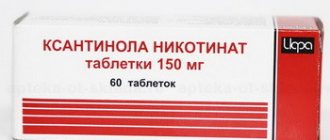A polyene antibiotic, which has been on the pharmacological market for many decades, used as a fungistatic agent for the treatment of various forms of candidiasis, Nystatin is available in several dosage forms, including Nystatin tablets. What the drug helps in tablet form, which is used somewhat less frequently than common ointments and suppositories, can be found out by carefully studying the instructions for use or consulting with the doctor who made such a prescription. Although, due to the effectiveness of the drug and its demand, many people know the name Nystatin, what its dosage forms are used for, and what therapeutic effects can be achieved with its help.
Each of those who have used the medicine can name a specific case of treatment, and this could be vaginal candidiasis, thrush or Nystatin for stomatitis, recommended by the dentist. This fungistatic has undeniable advantages in the form of low toxicity, undeniable effectiveness and affordable prices, which determined its continued reliable position among antimycotic agents.
Pharmacological group
Nystatin is a drug with antimicrobial action. Pharmacological group – antifungal polyene antibiotics. The drug exhibits a therapeutic effect against pathogenic fungi.
Pharmacodynamics
Nystatin is active against pathogenic fungi from the genus Candida (including Candida albicans) and Aspergillus. The active substance has a tropism for the sterol structures of fungi and is embedded in the membranes of their cells. As a result, channels are formed in the membranes through which electrolytes flow uncontrollably into the cell, which leads to an increase in internal osmolar pressure. The vital processes of fungi are disrupted.
In low doses the drug has a fungistatic effect, in high dosages it has a fungicidal effect. The addiction of pathogenic fungi to the drug develops slowly.
Pharmacokinetics
After oral administration, Nystatin is practically not absorbed from the digestive tract. The bioavailability of the drug is no more than 5%. It is excreted unchanged through the intestines with feces. The part of the medicine that is absorbed in the digestive tract leaves the body in the urine.
Reviews
Patients who have taken Nystatin in different forms say that the drug is effective, but only if Candida fungi are sensitive to it. Regardless of the release form, the drug is well tolerated by patients.
Side effects in the form of allergic reactions, digestive disorders, nausea and fever are extremely rare. The use of the drug in the form of suppositories and ointments almost does not cause allergic reactions of a local nature.
At the end of the article you can read reviews from real patients.
Indications for use
For adults
Nystatin is prescribed for infections caused by pathogenic fungi of the genus Candida and Aspergilius.
- Candidiasis of the oral mucosa.
- Candidiasis of the esophagus.
- Candidiasis of the digestive tract.
- Vaginal candidiasis (thrush).
- Fungal infection of the skin.
- Prevention of candidiasis of the digestive tract during long-term treatment with antibiotics, cytostatics, glucocorticoids.
Nystatin is prescribed for the prevention of fungal infection in weakened patients, including those with immunodeficiencies.
For children
Nystatin is prescribed in children over 12 years of age. Indications for therapy are the same as for adults.
For pregnant women and during lactation
The drug should not be taken during pregnancy due to the possible risk of toxic effects on the fetus. During the period of breastfeeding, the child is temporarily weaned from the breast.
Nystatin tablets: what helps
The narrow therapeutic effect of the drug, the length of its proven reputation and the resistance that some types of fungus have managed to develop to the polyene antibiotic do not mean that Nystatin has stopped being used for this reason. Indications for the use of the drug apply to fungal infections, regardless of their location on the skin and mucous membranes, but it should not be used to treat viral and bacterial lesions, because viruses and bacteria are not susceptible to the main active substance of the drug. The main indication for the use of the drug is the manifestation of the vital activity and activity of yeast-like fungi of the genus Candida in the human body.
Don’t be shy, ask our consultants questions, right here on the website. We will definitely answer. Leave commentsGo
- Candida, being a conditionally pathogenic fungus, is able to activate under the influence of provoking factors, both exogenous and endogenous, and begin pathogenic activity, leading to the development of a specific negative process, known as candidiasis. This process spreads in the body to the mucous membranes and epidermis, and the localization of the fungal infection may depend on the age or gender differences of a particular patient. Nystatin is used to suppress the vital functions and activity of the fungus, regardless of its location, and prevents the occurrence of negative consequences that develop during the period of its pathogenic productivity. Tablets with the active substance nystatin exhibit their specific effect and suppress candidiasis in the places of their development:
- on the mucous membrane of the gastrointestinal tract;
- in the oral cavity (mucosa, gums, palate and tongue);
- in the reproductive system of women;
- in the male genitourinary system;
- with the development of candidiasis from long-term antibiotic therapy;
- to prevent the development of candidiasis during operations in the intestinal cavity;
- to prevent the occurrence of mycoses in people with weakened immune systems or autoimmune diseases.
Medicines with the active ingredient nystatin, a polyene antibiotic, are produced in several dosage forms for use at the site of local damage, in hard-to-reach or inconvenient places. Suppositories with nystatin are no less common than the tablet form and are often used in gynecology and proctology.
By the way, read more on this topic: Nystatin suppositories: instructions for use
Application and dosage
For adults
Nystatin is taken 40-60 minutes before meals. Do not chew the tablet, wash it down with a small amount of water.
Prescribe 1-2 tablets (250,000-500,000 units) 3-4 times a day. The maximum daily dosage is 1,500,000-3,000,000 units. In severe clinical cases, the daily dosage is increased to 4,000,000-6,000,000 units. The course of therapy is continued for 7-14 days. For recurrent forms of infection, treatment is repeated after 3-4 weeks.
For children
Children over 12 years of age are treated according to standard regimens. The maximum daily dose should not exceed 2,000,000 units.
For pregnant women and during lactation
The drug should not be used during pregnancy and breastfeeding.
Nystatin: contraindications
An obstacle to the use of the drug may be the presence of individual immunity to nystatin or auxiliary components in the dosage form. The possibility of using Nystatin during pregnancy or lactation, it is preferable to use another medicine. When choosing between Nystatin or Fluconazole, which is better to use during pregnancy - Fluconazole: it belongs to the triazoles and has a selective effect on the pathogenic agent, unlike Nystatin, which belongs to the antibiotics. Pathologies of the gastrointestinal tract and hepatobiliary system (pancreatitis and liver failure) are also considered contraindications.
Side effects
Side effects usually occur when high doses of the drug are prescribed.
- Nausea, vomiting, heartburn, loose stool.
- Bitter taste in the mouth.
- Abdominal pain.
- Fever, chills.
- Itchy skin, urticaria.
- Dry cough.
- Increased heart rate.
- Muscle pain.
If side effects occur, reduce the dose of the drug. If the measures taken are ineffective, the drug is discontinued.
Release form
The choice of one or another drug composition depends on the location of the infectious focus. Thus, film-coated tablets are prescribed for oral administration for oral candidiasis in older children. For children from one to three years old, the pills are diluted with milk or a vitamin solution. For the treatment of oral candidiasis, newborns are prescribed an oral suspension obtained by placing several Nystatin granules in an aqueous base.
Rectal (vaginal) suppositories are mainly used as part of complex therapy for intestinal/vaginal candidiasis. Nystatin ointment is indicated for fungal skin infections. In addition to the polyene antibiotic, it contains auxiliary components such as lanolin and white petroleum jelly, which ensure uniform distribution of the drug.
Analogs
Instead of Nystatin tablets, you can use the following medications:
- Pimafucin belongs to antifungal agents and is a substitute for Nystatin in the clinical and pharmacological group. The medicine is available in tablets, vaginal suppositories, and cream. The antifungal medication can be used in newborns, pregnant women and breastfeeding women.
- Griseofulvin is an antifungal agent that is produced in tablets. They should not be used by pregnant or breastfeeding women. For children, the drug is prescribed at the rate of 16 mg per kg of weight.
- Nizoral is a substitute for Nystatin in the clinical and pharmacological group. The medicine is available in tablets, creams, and shampoos. It can be used according to strict indications for the treatment of pregnant and lactating women. Tablets are prescribed for children from 3 years old, shampoo from 12 years old.
- Fungoterbine belongs to the Nystatin substitutes in the therapeutic group. The medicine can be taken in tablet form for patients over 2 years of age; they should not be taken by pregnant or breastfeeding women. In addition, the drug comes in a spray and cream, which are not recommended for patients under 12 years of age, but can be used by pregnant women and breastfeeding women.
Nystatin and its action
Nystatin is a polyene antibiotic, which also belongs to the group of antimycotics (antifungal agents). The drug is produced in the form of tablets, “Nizhpharm”, “Biokhimik”, “Biosintez” and others. 20 tablets cost about 40 rubles, 100 tablets - 160 rubles.
The pills contain 500 thousand units of the active substance - nystatin.
The tablets are round in appearance, biconvex, covered with enteric film, light yellow in color. A greenish tint is allowed, while the kernel has a yellow or brownish color. The composition also contains auxiliary substances:
- sucrose;
- talc;
- starch;
- methocel;
- polysorbate;
- titanium dioxide;
- pigments.
Initially, it was believed that nystatin helps cope only with fungi of the genus Candida. Later it was proven that the drug’s activity also extends to suppressing the viability of intestinal amoeba and a number of other microbes. However, Nystatin is much more often used against diseases caused by yeast-like fungi.
How does nystatin work? The structure of the substance contains double bonds that have tropism for fungal cell membranes. After taking the tablets, the drug molecule is embedded in the cell walls of mycosis pathogens, leading to the appearance of tubules in it. Through them, the most important electrolytes will be lost uncontrollably, as a result the fungi die. The advantage of Nystatin is the slow development of resistance to it, low systemic absorption and almost constant excretion through the gastrointestinal tract. Among other things, Nystatin is produced in the form of vaginal suppositories used in gynecology. There is also the drug Tetracycline with Nystatin - a combination drug.
Nystatin: overdose, emergency situations - what to do
In case of overdose or poisoning, immediately call an ambulance or call your doctor. An overdose of some drugs can be fatal.
Note: this review article on the use of nystatin is not a substitute for the full instructions from the manufacturer of the drug; it serves solely for brief information purposes and cannot be a definitive guide to action. Carry out any actions related to treatment and use of medications solely on the basis of the prescription of your attending physician.
Author of the article: Andrey Mirkin, Moscow Medicine©
Drug interactions
Due to the fact that Nystatin does not enter the circulatory system, does not have a transformation effect and is not able to accumulate in the body, it practically does not interact with other drugs. The only exceptions are some medications with which the antifungal drug can bind, thereby losing its own activity or reducing the effectiveness of a particular drug.
How to take Nystatin with antibiotics
The simultaneous use of an antimycotic and Tetracycline tablets has a positive effect on the human body. This “tandem” has a pronounced antimycotic and antifungal effect, and therefore helps to effectively fight a variety of diseases. The combined use of Clotrimazole and Nystatin negatively affects the activity of the former. In addition, it is not recommended to simultaneously take an antifungal drug with penicillins and cephalosporins: the antimycotic reduces the effectiveness of these groups of antibiotics.
What is it used for?
The Candida fungus is a conditionally pathogenic yeast-like microorganism that requires certain conditions for active reproduction. Weakened immunity and imbalance of microflora due to long-term use of antibiotics are the main factors in the development of candidiasis. Nystatin selectively inhibits the growth of fungi and creates conditions for the active development of “beneficial” microorganisms. It is advisable to prescribe the drug for the following conditions:
- fungal infection due to prolonged use of antibiotics, surgery;
- candidiasis of the skin and mucous membranes;
- fungal stomatitis;
- candidiasis of the vagina, external genitalia;
- fungal sore throat;
- damage to the gastrointestinal tract.
